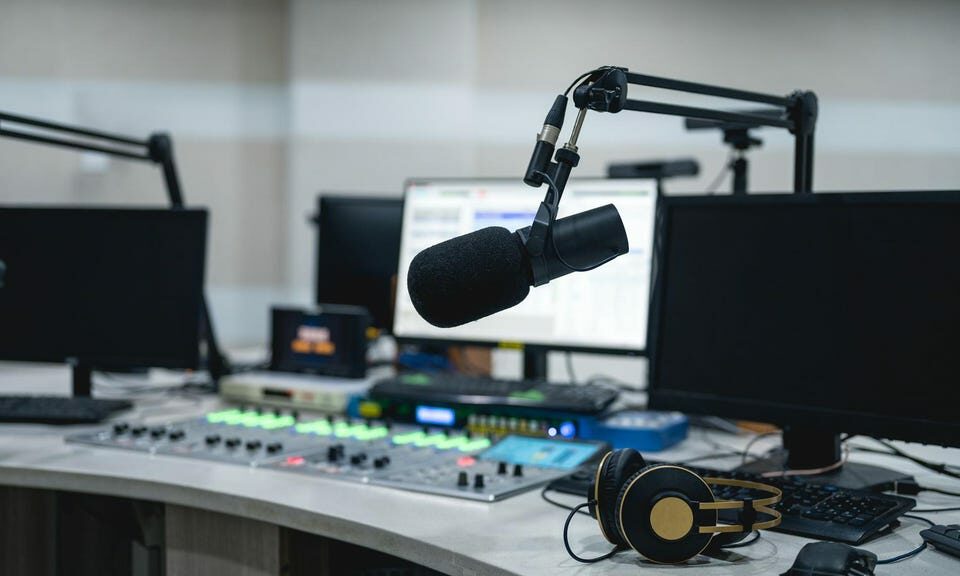Patrick O’Neill Managing Partner of Sherlock Communications and named Latin America’s Best PR Professional 2020 by PR Week Global Awards
getty
Without a doubt, the past decade has seen enormous changes in how we consume media. Traditional broadcast television has largely been replaced by streaming, and radio has been replaced by podcasts and digital platforms like Spotify. Technological advances that had already been driving the growth of internet-based media were supercharged by the onset of the Covid-19 pandemic in 2020.
But have the changes that have taken hold in much of the developed world been replicated in Latin America—a mix of the developed, underdeveloped and everything in between? And is radio still popular?
Our PR agency’s 2021 Media Consumption survey, in which we spoke to more than 3,100 people in Colombia, Brazil, Peru, Mexico, Argentina and Chile, gathered some interesting findings, including from traditionally marginalized communities in the region.
One in 4 people surveyed said they didn’t use the radio for news, with the trend particularly prevalent in Argentina (28%). Daily news consumption via radio was also down year on year in Colombia, Mexico and Chile. Brazil and Peru, in contrast, bucked the trend with a 14% and 3% increase, respectively, in using radio for news. For frequency of listening, a slightly more positive picture emerged. Some 46% of Brazilians said they tuned in to radio news broadcasts at least once a day. In Peru, the figure was 39%, 27% in Chile and 34% in Argentina.
MORE FOR YOU
Smaller Latin American countries also showed a change in their media consumption habits during the pandemic. A study carried out by Cisneros Interactive Audio Advertising and Brandwatch concluded that over 60% of respondents, on average, found audio (radio, podcasts and music) to be an important content format during the pandemic.
Reasons For Optimism
The picture is a mixed one for radio. Across the region—with the notable exception of Argentina—television is regarded as being the most trustworthy source of news, with radio taking third, fourth or fifth place in most surveyed countries.
Overall consumption of news via radio also fell Latin America-wide by 14% between 2020 and 2021. So, is it really worth investing in the medium when the internet and digital media are in such ascendancy? Well, consider this: Listenership in Brazil not only increased year on year, but in the megalopolis of São Paulo, there are now at least 19 radio stations with over 1 million listeners.
Another sprawling metropolis, Mexico City, has an estimated 69 stations covering the AM and FM bandwidths, which recorded over 115 million accumulated listens in 2021, according to Mexican market researcher INRA. This figure equated to a combined 5.8% increase in Mexico City’s annual radio audience for the year compared with 2020.
An Opportunity In The Latam Market
But while the sizes of the audiences tuning in are indeed enormous, the question of trust remains. According to our survey, people across the region trust news from social media more than the content of podcasts. Generally, this means it can be more challenging to generate sympathy and engagement from audiences in the region through audio media when compared to the internet or television.
However, there is positive work that can be done to improve trust levels in radio. A good first step is to work with a local agency with knowledge and experience of the market who can advise on the best way to formulate a radio communications campaign in a target country.
For example, when our agency was tasked with gaining radio coverage across Latin America for a stock image marketplace client, we found that target campaigns were really helpful. We approached each radio station differently, depending on the region. For instance, for Buenos Aires, we tapped a company spokesperson to speak on the topic of body image—a topic that was relevant to our client and to the audience.
Another way of generating consumer confidence during a campaign could be working with professionals who are traditionally considered trustworthy by listeners. Perhaps unsurprisingly, people we surveyed said they give the most credence to the opinions of scientists and family—and to a lesser extent, journalists—when it comes to trustworthy spokespeople. Politicians, actors and social media influencers (the most modern of phenomena) were seen as the least trustworthy.
So, if it makes sense for your brand, a first step toward making sure your message is taken seriously could be bringing on board a scientist to give a professional viewpoint or hiring a journalist to talk about your brand. There is also the option of launching a combined communications campaign that brings more trusted media into the mix, such as the internet in Argentina or television in Brazil, Chile, Colombia or Mexico.
So, is radio still popular in Latin American countries? While it is clear that news radio has been undergoing a decline and the topic of trust needs some thought before launching a campaign, this is far from a redundant media. Yes, some people may not view radio as their news source of choice, but when it comes to music, they are still tuning in.
Forbes Agency Council is an invitation-only community for executives in successful public relations, media strategy, creative and advertising agencies. Do I qualify?
Go to Source
Author: Patrick O’Neill, Forbes Councils Member




